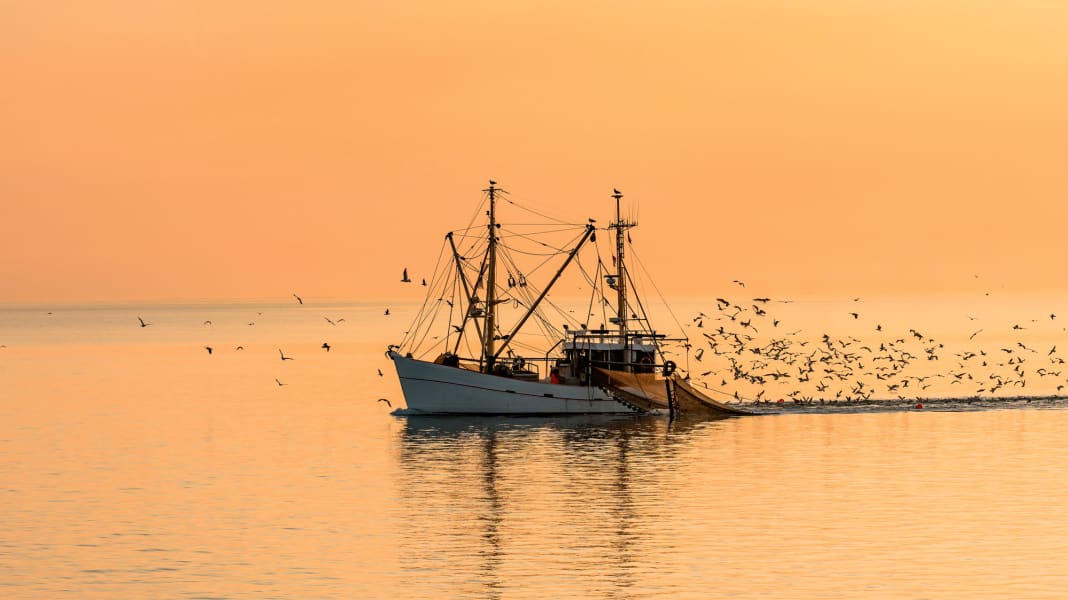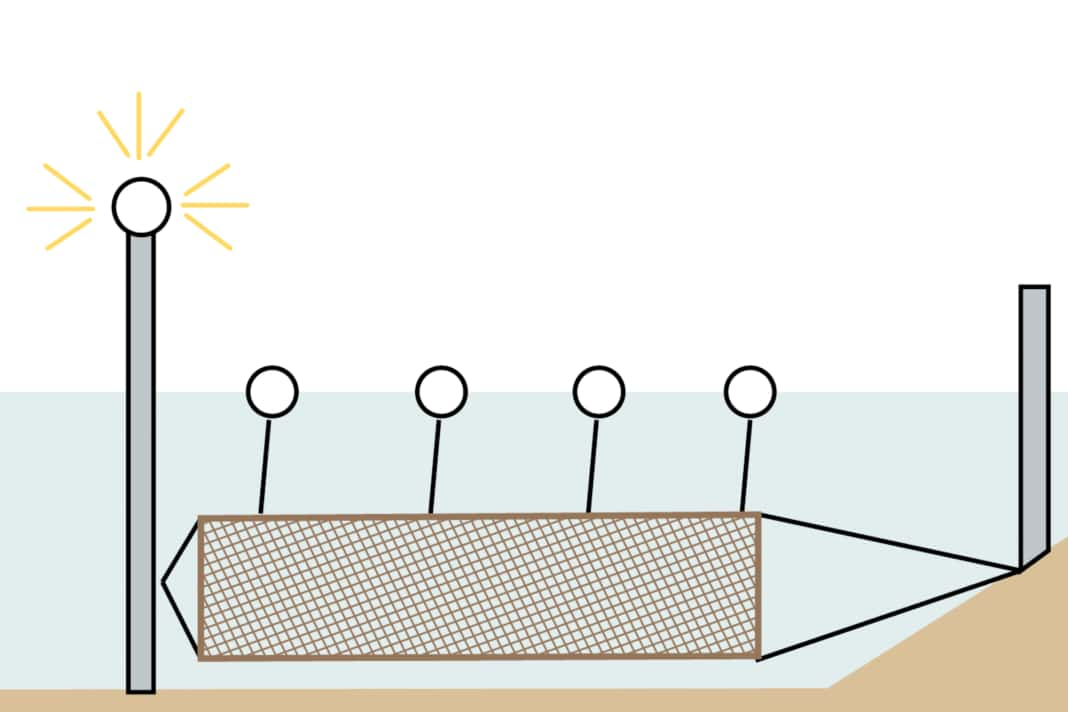
Encounters with fishing flags often cause uncertainty. This is because those who are not experts find it difficult to imagine whether the fishing gear underneath is lying on the bottom or whether there are nets attached under the water surface between the fishing flags, on which the propeller or keel can get caught.
The flags are usually recognised in time, it is possible to avoid them and the situation eases as quickly as it arose. However, if things turn out differently, it can be bitter. Knowing the meaning of the various fishing flags can avoid a lot of trouble on the way. Regardless of whether you are sailing your own boat or a chartered vessel.
It's therefore no surprise that the topic is occupying entire internet forums. And that's why we have literally got to the bottom of the matter, spoken to fishermen and compiled the regulations for German, Danish and Swedish waters so that your summer cruise is not jeopardised.
Overview of the different trapping systems






Regulations in Germany
The labelling of fishing gear in German waters is regulated in the respective coastal fishing regulations (KüFVO). Due to our federal system, the labelling of fishing nets therefore differs from state to state. The KüFVOs of Schleswig-Holstein and Mecklenburg-Western Pomerania are quite similar, but the regulations in Lower Saxony are very different.
In the two eastern federal states, the main issue is the colour of the flags used to mark the different fishing gear. The fishermen mark the places where they set their fishing net with square flags. They are either black or red and are deployed on buoys so that they protrude at least 1.5 metres, and in certain circumstances even two or three metres, above the surface of the water. Fish traps are labelled with black flags. The traps lie on the bottom and are generally only around 50 centimetres high, which is why they do not pose a danger to most boats above a certain water depth.
In principle, however, it is of course always important to allow for a certain buffer in the calculation between the water depth, the supposed height of the fishing gear and your own draught and to be rather generous. Set nets are marked by fishermen with larger red flags. The standard height of these nets is two metres. They therefore pose a greater risk to recreational boaters, as they are also set on the bottom like the fish traps, but are correspondingly higher. These fishing gear should therefore be avoided in waters shallower than five metres.
Fishermen already show consideration for recreational boaters when setting their nets
Peter Dietze, a fisherman from Niendorf on the Baltic Sea, tells our sister magazine YACHT that he and his colleagues already take recreational boaters into consideration when setting their gillnets. "Because we are aware of the problems between the depth of the water, the draught of the boats and our gillnets, we mainly use them in areas with greater water depths," says Dietze. The fishermen mark the ends of the nets with two square flags, one above the other. In Schleswig-Holstein, nets up to a total length of 1,200 metres are marked with a single flag in the middle. If fishing gear with a length of more than 1,200 metres is deployed, the fishermen set a single flag every 600 metres at the latest.
The regulation in Mecklenburg-Western Pomerania stipulates that fishing gear over 500 metres in length must be marked with an additional flag every 500 metres. While in Schleswig-Holstein all gillnets marked with red flags outside the three-mile zone must be labelled with radar reflectors, in Mecklenburg-Western Pomerania all fishing gear outside the announced fishing districts must be fitted with radar reflectors.
In Mecklenburg-Western Pomerania, the flags of gillnets set at a distance of more than four nautical miles from the baseline must be illuminated at night with a white light that flashes every five seconds. In Schleswig-Holstein, gillnets deployed outside the baseline in the North Sea are equipped with white lights at night. In addition, red buoys or canisters without flags may also be used as fishing markers in the mudflats of the Schleswig-Holstein North Sea coast. In the North Sea of Lower Saxony, all fishing gear, whether traps or gillnets, must be marked with yellow buoys, yellow canisters or yellow plates. Particular caution is therefore required here, as the fishing gear may be both pots and gillnets.
Beware of floating fishing nets at the beginning of the year
In spring, German fishermen also use floating nets to hunt for herring. According to Peter Dietze, these herring nets are specially marked with red balls and red canisters. "They are therefore easy to see and the rows are very small. Anyone out on the water can see that something is floating there, even if they don't immediately recognise it as a fishing net," says Dietze. However, he is not aware of any incidents between the floating herring nets and skippers, partly because there are comparatively fewer pleasure craft on the water at this time of year.
The KüFVOs of Schleswig-Holstein and Mecklenburg-Western Pomerania stipulate that herring nets must be marked with floats so that the course of the nets can be recognised.
Regulations in Denmark
Fishing has a long tradition in Denmark. As a result, there are various ways in which fishermen get their catch from the water onto their boats. One of the specialities here is pair fishing. The fishing net between the cutters can extend up to 400 metres aft. In addition, the cutters quickly begin to drift heavily as they only travel slowly.
Regulations in Sweden
In general, all fishing nets in Swedish coastal waters are equipped with two flags or reflectors in the western sector and one flag or reflector in the eastern sector. The centre of the fishing gear is marked with a white flag or a yellow reflector. Within the archipelago there is a maximum of 600 metres between the markings, outside up to one nautical mile. Some nets are fitted with a yellow flashing light.

